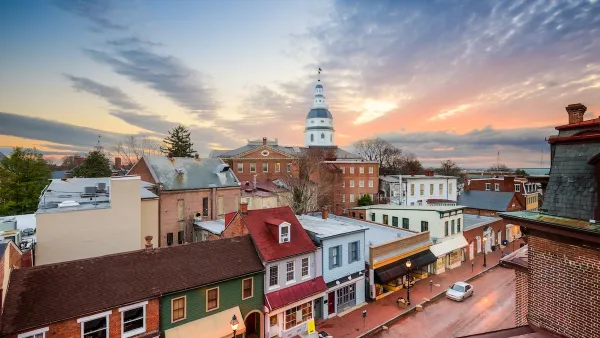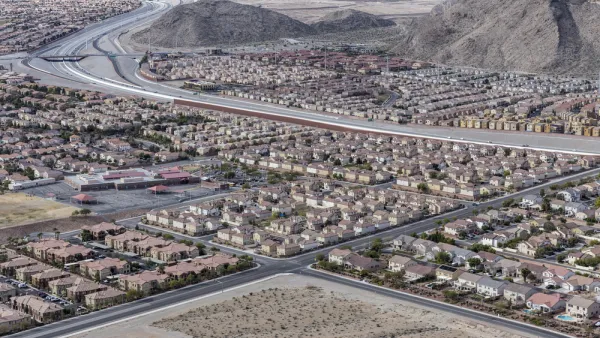Last week, I was busy trying to turn my paper on sprawl in Canada (available at http://works.bepress.com/lewyn/65/) into a speech. In my paper, I define sprawl in two ways: where we grow (measured by growth or decline of central cities, controlling for municipal annexations) and how we grow (measured by modal shares for cars and transit). As I was proofing, I asked myself: why these particular measurements? What presuppositions underlie defining sprawl based on, say, modal share as opposed to the growth of a urban area's land mass?
Last week, I was busy trying to turn my paper on sprawl in Canada (available at http://works.bepress.com/lewyn/65/) into a speech. In my paper, I define sprawl in two ways: where we grow (measured by growth or decline of central cities, controlling for municipal annexations) and how we grow (measured by modal shares for cars and transit). As I was proofing, I asked myself: why these particular measurements? What presuppositions underlie defining sprawl based on, say, modal share as opposed to the growth of a urban area's land mass?
It seems to me that how you define sprawl must be based on what you view as interesting or problematic about sprawl. My concerns about sprawl are based primarily on concerns about freedom and consumer choice. To me, a region where city living is not a reasonable option is a place lacking in adequate choice, so I define a sprawling region as one where the city has weakened over time. A region where not driving is not a reasonable option for most people is similarly lacking in consumer choice, so I focused on automobile dependence and used modal share as my leading criterion.
But someone focused primarily on environmental issues would want to measure sprawl very differently. For example, if your primary interest is in sprawl-related destruction of wildlife habitat or agriculture, you would consider a sprawling region as one with lots of land that is no longer usable by wildlife or agriculture (perhaps measured by the growth of the suburban land mass from X square miles to Y square miles). If your primary interest is air pollution and greenhouse gas emissions you might wish to define a sprawling region as one with a high level of transportation-related emissions per capita (a much trickier enterprise, since these sorts of statistics are not so easy to find). If your primarily concern is social and fiscal inequality between city and suburb, you might define a sprawling region as one where a city is much poorer than its surrounding suburbs, and accordingly focus on measures of per capita and household income for a city and its surrounding suburbs.

Analysis: Cybertruck Fatality Rate Far Exceeds That of Ford Pinto
The Tesla Cybertruck was recalled seven times last year.

National Parks Layoffs Will Cause Communities to Lose Billions
Thousands of essential park workers were laid off this week, just before the busy spring break season.

Retro-silient?: America’s First “Eco-burb,” The Woodlands Turns 50
A master-planned community north of Houston offers lessons on green infrastructure and resilient design, but falls short of its founder’s lofty affordability and walkability goals.

Test News Post 1
This is a summary

Analysis: Cybertruck Fatality Rate Far Exceeds That of Ford Pinto
The Tesla Cybertruck was recalled seven times last year.

Test News Headline 46
Test for the image on the front page.
Urban Design for Planners 1: Software Tools
This six-course series explores essential urban design concepts using open source software and equips planners with the tools they need to participate fully in the urban design process.
Planning for Universal Design
Learn the tools for implementing Universal Design in planning regulations.
EMC Planning Group, Inc.
Planetizen
Planetizen
Mpact (formerly Rail~Volution)
Great Falls Development Authority, Inc.
HUDs Office of Policy Development and Research
NYU Wagner Graduate School of Public Service





























